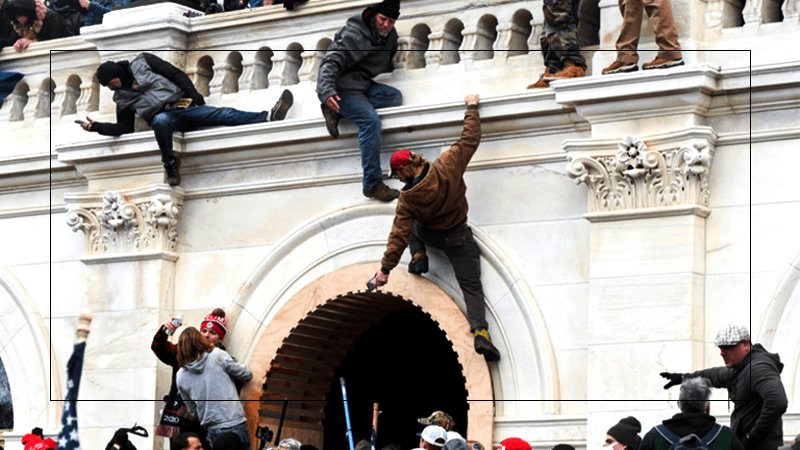On Wednesday morning, an interfaith group of religious leaders gathered outside of Luther Place Memorial Church in the nation’s capital. For two hours, the clergy prayed for an end to violence, for an eradication of white nationalism and for a groundswell of racial justice.
Their small prayer circle surrounded a Black Lives Matter sign, created to replace similar banners repeatedly stolen and destroyed by the far-right Proud Boys in December.
Near the end of the service, a gaggle of men adorned in patriotic clothing and “Make America Great Again” hats approached. One walked into the middle of the circle, pretended to fall, and laid on the ground while another man knelt on his neck — an apparent attempt to mock the 2020 killing of George Floyd at the hands of police.
The group then walked across the street — where National City Christian Church had just unfurled a 16-foot Black Lives Matter banner — and repeated the performance in front of cameras.
As the man stood up, grinning, the church’s pastor, the Rev. Amy Butler, looked on solemnly, shaking her head.
It was an unsettling beginning to a harrowing day that would culminate with a massive mob of Trump supporters storming the U.S. Capitol as lawmakers attempted to approve the presidential election results, forcing Vice President Mike Pence to flee and members of Congress into hiding.
It was an unprecedented day that exposed a number of fissures in American society, including two wildly different approaches to faith.
Among those in attendance at the morning vigil — which plans to continue inside for 24 hours — was the Rev. Leila Ortiz, bishop of the Evangelical Lutheran Church in America’s Washington synod. She condemned the notion that Christianity could somehow give license to the kind of violence perpetrated against houses of worship in D.C.❐
























